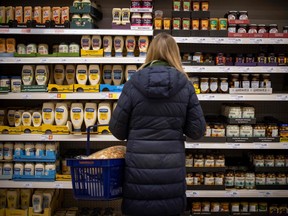The consumer price index (CPI) has reached a three-decade high, marking a significant increase in inflation. According to Statistics Canada, the CPI rose 5.1% in January from a year earlier, surpassing the five percent threshold for the first time since September 1991.
Inflation at a Three-Decade High: A Major Concern for the Bank of Canada
The surge in inflation is expected to put pressure on the Bank of Canada to raise interest rates. Governor Tiff Macklem has expressed concerns about inflation, stating that he’s "uncomfortable" with the current rate. The latest reading will likely rekindle worries that the Bank of Canada made a mistake by passing on an opportunity to raise interest rates in January and will now have to play catch-up.
The Details Behind the Numbers
While the Bank of Canada won’t be surprised by the CPI’s jump, the details behind the numbers are concerning. The largest one-month increase since January 2017 is a significant red flag for inflation. All groups used to arrange items in its price basket posted significant gains, with shelter costs increasing 6.2% from January 2021.
Shelter Costs on the Rise
The agency’s measure of shelter costs increased 6.2% from January 2021, marking the fastest increase since February 1990. Real-estate prices aren’t included in the CPI, but they influence other costs related to owning or renting a dwelling. Replacement costs surged 13.5% from a year earlier, outweighing the disinflationary effect of lower mortgage costs.
Food Prices Continue to Rise
Food prices at grocery stores rose 6.5% on the year, compared to 5.7% in December. Reduced supply after tough growing conditions around the world continued to fall short of demand, putting upward pressure on food prices. Higher shipping costs from various disruptions in supply systems are also contributing to the increase.
Gasoline Prices Continue to Soar
Gasoline remained a key driver of overall inflation, with prices increasing more than 30% from January 2021 due to oil price jumps amid geopolitical tensions.
What’s Next for Interest Rates?
Douglas Porter, chief economist at BMO Capital Markets, expects a steady series of rate hikes in the coming meetings. "This is far too hot for comfort for the Bank of Canada," he said. "We look for four in a row to start, and it may well require much more than that to bring inflation to heel."
A Steady Series of Rate Hikes Ahead
The surge in inflation is expected to put pressure on the Bank of Canada to raise interest rates. With inflation at a three-decade high, it’s clear that the Bank of Canada will need to take action to bring inflation back under control.
Key Takeaways
- The consumer price index (CPI) rose 5.1% in January from a year earlier, surpassing the five percent threshold for the first time since September 1991.
- The surge in inflation is expected to put pressure on the Bank of Canada to raise interest rates.
- Governor Tiff Macklem has expressed concerns about inflation, stating that he’s "uncomfortable" with the current rate.
- The largest one-month increase since January 2017 is a significant red flag for inflation.
- All groups used to arrange items in its price basket posted significant gains.
- Shelter costs increased 6.2% from January 2021, marking the fastest increase since February 1990.
- Replacement costs surged 13.5% from a year earlier, outweighing the disinflationary effect of lower mortgage costs.
- Food prices at grocery stores rose 6.5% on the year, compared to 5.7% in December.
- Gasoline prices increased more than 30% from January 2021 due to oil price jumps amid geopolitical tensions.
Related Articles
- $100 Oil Threatens to Compound World Economy’s Inflation Shock
- Blockades, Fruit and the Annoying Impact of Hiccups in the Supply Chain
- Canada Still Passing Through ‘Long Dark Tunnel’ of COVID
